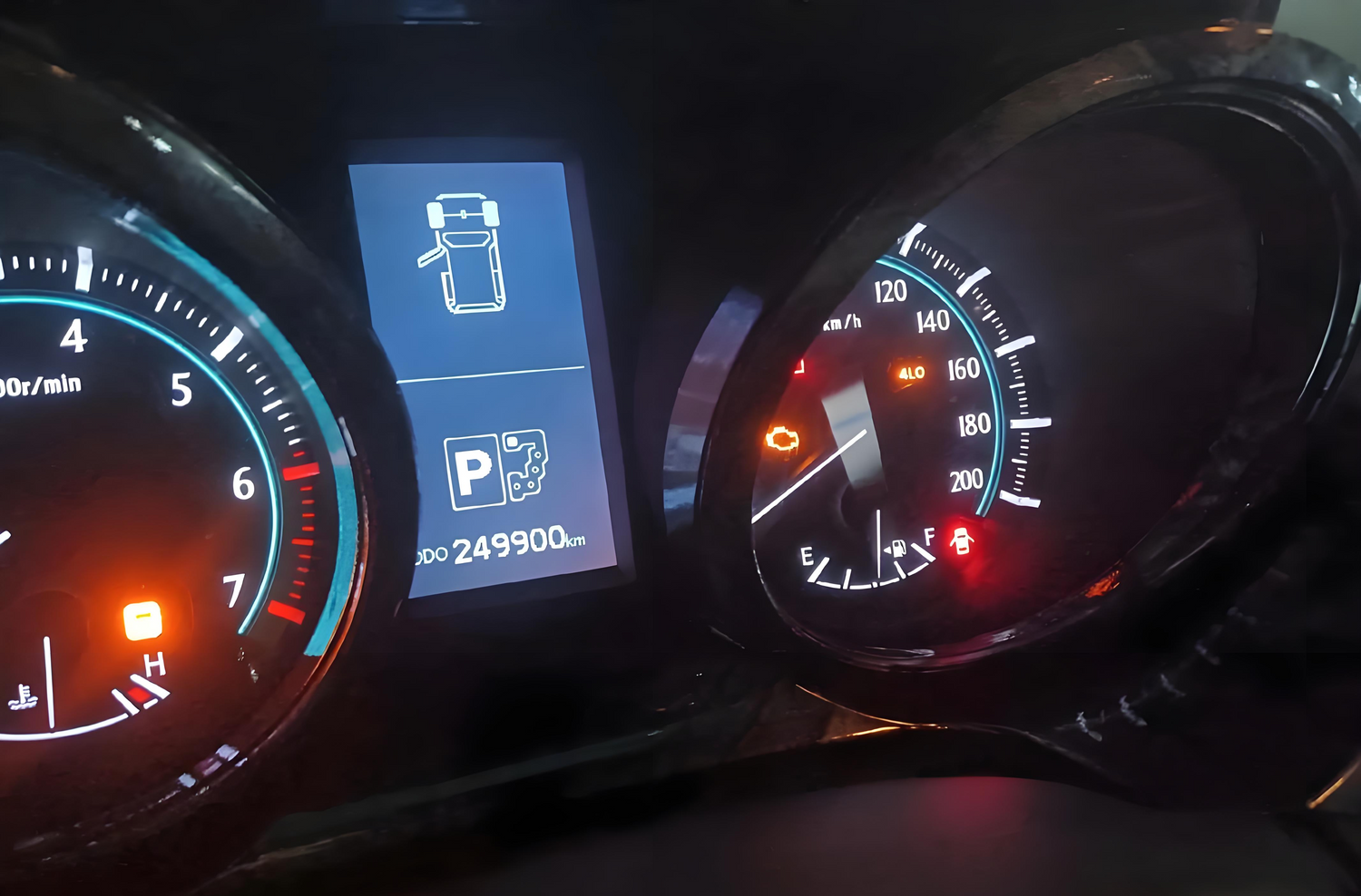This article will introduce 7 common fault symptoms of MAP sensors, as well as the causes of the faults. And it will also discuss how to diagnose a faulty MAP sensor.
Introduction
The MAP in a car refers to the MAP Sensor (Manifold Absolute Pressure Sensor). It is a key component in the car's fuel injection system.
The core function of the MAP sensor is to convert the pressure changes in the intake manifold into electrical signals. These signals are used by the Engine Control Unit (ECU) to adjust the fuel injection amount and ignition timing.
If the MAP sensor doesn't work properly, it may lead to a decline in engine performance, an increase in fuel consumption, or difficulties in starting the engine.
The specific location of the MAP sensor varies according to different car models. Generally speaking, the MAP sensor is located on or near the intake manifold. It may also be on the intake pipe after the turbocharger. In some car models, the MAP sensor is integrated in the air filter box, near the firewall, or connected to the manifold through a vacuum hose, such as in the Ford 300 series - F - series trucks.
How does a MAP sensor work?
When you turn the car key (or press the start button), the ECU will send a reference voltage to the MAP sensor to start the process. This is the starting point for the MAP sensor to work. Inside the MAP sensor, there is a piezoresistive or piezoelectric crystal. These parts can detect the subtle changes in the pressure inside the intake manifold. These changes are converted into electrical signals by the sensor and sent back to the ECU in real - time.
As you press the accelerator pedal, the throttle valve opens wider. This action causes the pressure inside the intake manifold to increase. The MAP sensor will detect this change and send a new voltage signal to the ECU. The ECU combines the data from the MAP sensor with the information from other sensors (such as the oxygen sensor and the temperature sensor) to accurately calculate the required fuel injection amount and ignition timing. This ensures that the engine can run efficiently under various driving conditions and at the same time optimizes emission control.
Symptoms of Faulty MAP Sensor
The typical symptoms of a faulty MAP sensor cover engine operation, fuel economy, emissions, and the warning system. The specific symptoms can be summarized as follows:
- The Check Engine Light (CEL) comes on.
- Unstable idle or rough idling.
- Difficulty starting the engine or the engine stalls after starting.
- Engine misfires or knocks.
- Deterioration of fuel economy.
- Excessive exhaust emissions/failure to pass the emissions test.
- Entering the "Limp Mode".
The Check Engine Light (CEL) comes on.
When the MAP sensor malfunctions, it may send incorrect pressure signals to the ECU. After receiving these abnormal signals, the ECU will recognize that there is a problem with the engine control system. To alert the driver, it will trigger the Check Engine Light to come on.
Unstable idle or rough idling.
A malfunctioning MAP sensor prevents the ECU from accurately calculating the intake air volume, which in turn affects the fuel injection volume. As a result, the engine may experience severe vibrations, fluctuating RPMs, or have difficulty maintaining a stable idle, and may even stall. For example, a Harley - Davidson motorcycle may vibrate violently or stall at idle.
Difficulty starting the engine or the engine stalls after starting.
When starting the vehicle, the ECU relies on the information provided by the MAP sensor to determine the appropriate fuel injection volume and ignition timing. If the sensor malfunctions and transmits inaccurate information, it may make it difficult to start the engine. The vehicle may require multiple attempts to start, or it may stall soon after starting.
Engine misfires or knocks.
An imbalance in the air - fuel mixture ratio can lead to incomplete combustion, causing misfires (where individual cylinders stop working) or knocking (abnormal combustion), accompanied by strange noises and vibrations.
Deterioration of fuel economy.
A faulty MAP sensor results in inaccurate fuel injection. If too much fuel is injected and not fully burned, it leads to fuel wastage, significantly increasing the vehicle's fuel consumption. Car owners will notice that they need to refuel more frequently, and the fuel consumption for the same driving distance is much higher than normal.
Excessive exhaust emissions/failure to pass the emissions test
Inaccurate fuel injection causes an imbalance in the air - fuel mixture ratio, leading to incomplete combustion and the production of more harmful gases such as carbon monoxide (CO), hydrocarbons (HC), and nitrogen oxides (NOₓ). This causes the vehicle's exhaust emissions to exceed the standard, not only polluting the environment but also potentially causing the vehicle to fail the emissions test.
Entering the "Limp Mode"
The ECU may activate a protection program to limit the engine's power. This is manifested as a restricted maximum RPM or an inability to accelerate.
Common Causes of a Bad MAP Sensor
-
External pollution and environment
The MAP sensor's sensitive element can be affected by dirt, oil or dust, which disrupts pressure measurement and engine performance. Extreme conditions like high - temp, humidity or corrosive gases speed up component aging. -
Internal issues
Internal parts age and wear over time, especially sensitive elements under harsh conditions. Electrical problems such as wire breaks or loose connections lead to wrong data for the ECU. Physical damage from accidents or bad installation also impacts the sensor. -
Intake system leakage
Leaks in the intake system, like cracks or loose joints, make the measured pressure different from the actual one. This non - sensor fault is often misjudged as a MAP sensor problem.
Common MAP sensor fault codes
Different fault codes correspond to specific fault types. Although fault codes may vary depending on the specific vehicle model or manufacturer, the core problems usually focus on aspects such as the sensor's circuit condition, signal performance, and voltage level.
| Fault Code | Fault Type | Possible Fault Causes |
|---|---|---|
| P0105 | MAP sensor circuit fault (circuit interruption or abnormality) | 1. Faulty MAP sensor itself 2. Open - circuit, short - circuit or poor contact in the sensor wiring 3. Air leakage in the intake manifold 4. Faulty ECU (Engine Control Unit) |
| P0106 | MAP sensor signal range/performance abnormality | 1. Inaccurate sensor calibration 2. Blockage or air leakage in the intake system, resulting in abnormal pressure 3. Damaged or improperly connected vacuum tube of the sensor |
| P0107 | MAP sensor circuit voltage too low | 1. Short - circuit to ground in the sensor signal wiring 2. Faulty sensor with low output voltage 3. Low intake manifold pressure due to intake blockage or throttle valve fault |
| P0108 | MAP sensor circuit voltage too high | 1. Short - circuit to power supply in the sensor signal wiring 2. Faulty sensor with high output voltage 3. High intake manifold pressure due to exhaust blockage |
| P0420 | Catalytic converter efficiency low | 1. Aging or blockage of the catalytic converter 2. Faulty upstream or downstream oxygen sensor |
How to Diagnose a faulty MAP sensor
-
Reading fault codes
When the MAP sensor malfunctions, an OBD2 scanner can be used to quickly diagnose the problem. It can read the fault codes and monitor the sensor's data stream, thus rapidly pinpointing the issues with the MAP sensor. -
Inspecting the sensor's appearance
Check if the sensor's appearance is damaged, whether there are cracks or detachments in the vacuum hoses. Also, confirm whether the wiring harness plug is firmly connected. -
Measuring the sensor voltage
Turn on the ignition switch (without starting the engine) and measure whether the sensor's reference voltage (usually 5V) is normal.
Related Reading: Using OBD2 Live Data to Diagnose Stuck Purge Valve in EVAP System
How to Fix a faulty MAP sensor
-
Replacement
If the diagnosis confirms that the MAP sensor itself is damaged rather than having issues with the wiring or vacuum leaks, then replacing it with a new sensor is a common solution. -
Use OBD scanner to clear the codes
After replacement, you need to use a diagnostic tool to clear the historical fault codes. Use an OBD scanner to clear the codes so that you can re - monitor whether there are other problems with the vehicle. -
Road - testing the vehicle
Observe the engine's operating conditions through actual driving, such as whether the start is smooth, the idle is stable, and the acceleration is normal. At the same time, scan again to check if there are any new fault codes.
Can I Drive a Car with a Bad MAP Sensor?
When the MAP sensor malfunctions, the vehicle may still be able to run, but it will be accompanied by various performance issues, such as abnormal fuel consumption, lack of power, difficulty starting, and increased emissions. Moreover, long - term driving with a faulty MAP sensor may cause further damage to the engine and the catalytic converter. Therefore, it is not recommended to continue driving the vehicle when its MAP sensor fails.
FAQs
What happens when MAP sensor goes bad?
A faulty MAP sensor can severely affect the engine's performance. It sends incorrect signals to the engine control unit, leading to inaccurate fuel injection. As a result, the engine may suffer from a lack of power, slow acceleration, and unstable idling. Meanwhile, fuel consumption will increase significantly, and exhaust emissions will exceed the standard. In addition, the vehicle's fault indicator light will come on to remind the car owner to carry out timely repairs.
What happens if you unplug a MAP sensor?
After unplugging the MAP sensor, the engine control unit will activate the "limp - home mode", and the vehicle's performance will decline significantly. Starting the vehicle will become difficult, and the engine will have severe power shortages, making normal acceleration a challenge. Moreover, fuel consumption will rise, and exhaust emissions will worsen. The vehicle can only maintain a low - speed drive to the repair location.




Leave a comment
This site is protected by hCaptcha and the hCaptcha Privacy Policy and Terms of Service apply.